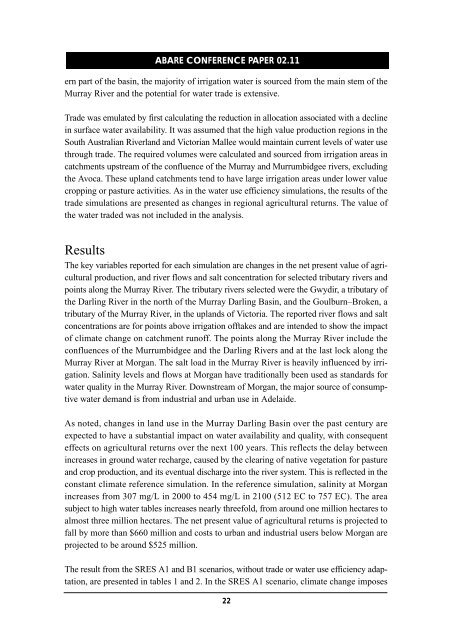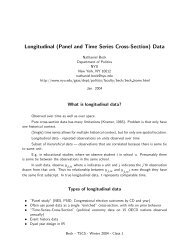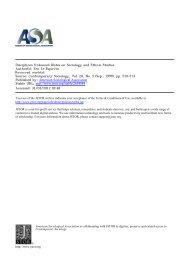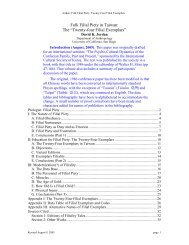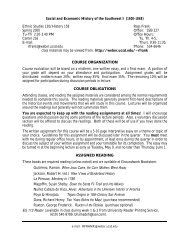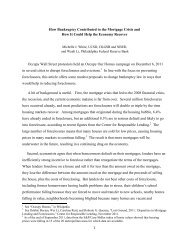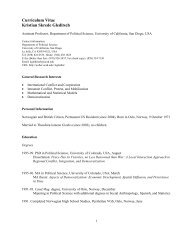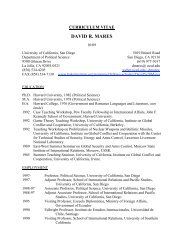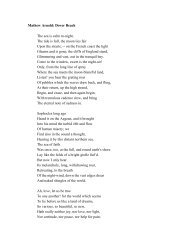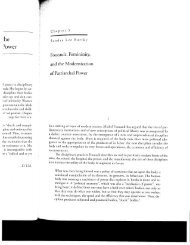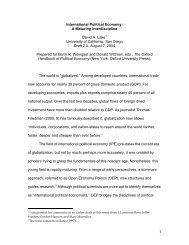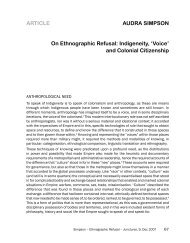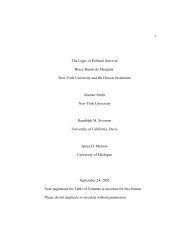Climate change and water resources in the Murray Darling Basin ...
Climate change and water resources in the Murray Darling Basin ...
Climate change and water resources in the Murray Darling Basin ...
Create successful ePaper yourself
Turn your PDF publications into a flip-book with our unique Google optimized e-Paper software.
ABARE CONFERENCE PAPER 02.11<br />
ern part of <strong>the</strong> bas<strong>in</strong>, <strong>the</strong> majority of irrigation <strong>water</strong> is sourced from <strong>the</strong> ma<strong>in</strong> stem of <strong>the</strong><br />
<strong>Murray</strong> River <strong>and</strong> <strong>the</strong> potential for <strong>water</strong> trade is extensive.<br />
Trade was emulated by first calculat<strong>in</strong>g <strong>the</strong> reduction <strong>in</strong> allocation associated with a decl<strong>in</strong>e<br />
<strong>in</strong> surface <strong>water</strong> availability. It was assumed that <strong>the</strong> high value production regions <strong>in</strong> <strong>the</strong><br />
South Australian Riverl<strong>and</strong> <strong>and</strong> Victorian Mallee would ma<strong>in</strong>ta<strong>in</strong> current levels of <strong>water</strong> use<br />
through trade. The required volumes were calculated <strong>and</strong> sourced from irrigation areas <strong>in</strong><br />
catchments upstream of <strong>the</strong> confluence of <strong>the</strong> <strong>Murray</strong> <strong>and</strong> Murrumbidgee rivers, exclud<strong>in</strong>g<br />
<strong>the</strong> Avoca. These upl<strong>and</strong> catchments tend to have large irrigation areas under lower value<br />
cropp<strong>in</strong>g or pasture activities. As <strong>in</strong> <strong>the</strong> <strong>water</strong> use efficiency simulations, <strong>the</strong> results of <strong>the</strong><br />
trade simulations are presented as <strong>change</strong>s <strong>in</strong> regional agricultural returns. The value of<br />
<strong>the</strong> <strong>water</strong> traded was not <strong>in</strong>cluded <strong>in</strong> <strong>the</strong> analysis.<br />
Results<br />
The key variables reported for each simulation are <strong>change</strong>s <strong>in</strong> <strong>the</strong> net present value of agricultural<br />
production, <strong>and</strong> river flows <strong>and</strong> salt concentration for selected tributary rivers <strong>and</strong><br />
po<strong>in</strong>ts along <strong>the</strong> <strong>Murray</strong> River. The tributary rivers selected were <strong>the</strong> Gwydir, a tributary of<br />
<strong>the</strong> Darl<strong>in</strong>g River <strong>in</strong> <strong>the</strong> north of <strong>the</strong> <strong>Murray</strong> Darl<strong>in</strong>g Bas<strong>in</strong>, <strong>and</strong> <strong>the</strong> Goulburn–Broken, a<br />
tributary of <strong>the</strong> <strong>Murray</strong> River, <strong>in</strong> <strong>the</strong> upl<strong>and</strong>s of Victoria. The reported river flows <strong>and</strong> salt<br />
concentrations are for po<strong>in</strong>ts above irrigation offtakes <strong>and</strong> are <strong>in</strong>tended to show <strong>the</strong> impact<br />
of climate <strong>change</strong> on catchment runoff. The po<strong>in</strong>ts along <strong>the</strong> <strong>Murray</strong> River <strong>in</strong>clude <strong>the</strong><br />
confluences of <strong>the</strong> Murrumbidgee <strong>and</strong> <strong>the</strong> Darl<strong>in</strong>g Rivers <strong>and</strong> at <strong>the</strong> last lock along <strong>the</strong><br />
<strong>Murray</strong> River at Morgan. The salt load <strong>in</strong> <strong>the</strong> <strong>Murray</strong> River is heavily <strong>in</strong>fluenced by irrigation.<br />
Sal<strong>in</strong>ity levels <strong>and</strong> flows at Morgan have traditionally been used as st<strong>and</strong>ards for<br />
<strong>water</strong> quality <strong>in</strong> <strong>the</strong> <strong>Murray</strong> River. Downstream of Morgan, <strong>the</strong> major source of consumptive<br />
<strong>water</strong> dem<strong>and</strong> is from <strong>in</strong>dustrial <strong>and</strong> urban use <strong>in</strong> Adelaide.<br />
As noted, <strong>change</strong>s <strong>in</strong> l<strong>and</strong> use <strong>in</strong> <strong>the</strong> <strong>Murray</strong> Darl<strong>in</strong>g Bas<strong>in</strong> over <strong>the</strong> past century are<br />
expected to have a substantial impact on <strong>water</strong> availability <strong>and</strong> quality, with consequent<br />
effects on agricultural returns over <strong>the</strong> next 100 years. This reflects <strong>the</strong> delay between<br />
<strong>in</strong>creases <strong>in</strong> ground <strong>water</strong> recharge, caused by <strong>the</strong> clear<strong>in</strong>g of native vegetation for pasture<br />
<strong>and</strong> crop production, <strong>and</strong> its eventual discharge <strong>in</strong>to <strong>the</strong> river system. This is reflected <strong>in</strong> <strong>the</strong><br />
constant climate reference simulation. In <strong>the</strong> reference simulation, sal<strong>in</strong>ity at Morgan<br />
<strong>in</strong>creases from 307 mg/L <strong>in</strong> 2000 to 454 mg/L <strong>in</strong> 2100 (512 EC to 757 EC). The area<br />
subject to high <strong>water</strong> tables <strong>in</strong>creases nearly threefold, from around one million hectares to<br />
almost three million hectares. The net present value of agricultural returns is projected to<br />
fall by more than $660 million <strong>and</strong> costs to urban <strong>and</strong> <strong>in</strong>dustrial users below Morgan are<br />
projected to be around $525 million.<br />
The result from <strong>the</strong> SRES A1 <strong>and</strong> B1 scenarios, without trade or <strong>water</strong> use efficiency adaptation,<br />
are presented <strong>in</strong> tables 1 <strong>and</strong> 2. In <strong>the</strong> SRES A1 scenario, climate <strong>change</strong> imposes<br />
22


